Last year my family ate over 600 pounds of potatos.
Yes, grocery shopping is interesting when you’re on a TED!
This year we hope to grow as many potatos as we can to save on our grocery bill, and when we do we will be faced with a unique challenge: how to keep a few hundred pounds of potatos without spoiling.
As it turns out, my local food co-op changed suppliers a few months ago. Ever since, it has been a challenge to get my safe potatos because their new supplier buys potatos from whomever has the best price, which often is NOT the producer that grows my potatos safely. Ugh!
Recently the helpful lady at the co-op called to let me know she had sucessfully tracked down three cases of my safe potatos and wanted to know how many I wanted.
I told her to save all three cases for me.
As hard as they are to get, now, I wasn’t about to let them get away!
Each case of potatos is 50 pounds. So right now I have over 150 pounds of potatos in my kitchen, waiting to be used.
It seemed as good a time as any to figure out how to preserve potatos for long term use.
Ideally, we’d all have a perfectly built root cellar with optimal air flow and temperature control. Potatos will keep for a very long time in those conditions.
However, since the onset of electric refrigeration, root cellars are few and far between. I think it’s safe to say that most of us don’t have one.
So what do the rest of us modern dwellers do to keep our hard-earned potatos for year round use?
Two things: dehydrate or freeze.
I recently did both to experiment, and I’m sharing part of the process and results today.
There are many ways you could approach this, but the way I liked best was to take as many potatos as I could fit into a large baking dish and bake them. It’s important to cook potatos before freezing or dehydrating because it prevents them from changing colors and texture.
In this case I peeled the potatos. With the ones I will grow I will leave the peels on.
Just scrub the potatos, peel them if you feel so inclined, and put them in the dish. Cover the dish with a lid or some foil.
I baked them for about half an hour at 350 degrees F. You want the potatos cooked, but not overcooked.
Then I let them cool on the counter until almost room temperature, and put the whole baking dish in the fridge.
The next day, I experimented with what shape I wanted my potatos to be.
Some I grated for hash browns, and some I cut with the mandolin for French fries.
Then I took half of each type and froze it, and the other half I dehydrated.
Today I’m only sharing frozen and dehydrated hash browns and French fries; the other things I tried I’ll share in another post. (This was getting a bit long!)
FROZEN FRENCH FRIES
To freeze the potatos (whether fries or hash browns) I just laid them out on a parchment paper lined baking sheet and stuck in the freezer. The next morning they were solidly frozen and suitable for bagging.
Ideally, I would have a food saver vacuum sealer, but since I don’t have one I made do with ziploc bags.
For the French fries, I actually think it would be easier to cut them BEFORE baking them. After baking, they’re very tender and don’t hold up as well to the rigors of a Mandolin.
I suppose if you cut your French fries by hand it would be better to bake them whole first, but I’m all about effort saving in the kitchen and the mandolin saves me a lot of effort!
When it was time to test out my frozen french fry efforts, I grabbed two potatos worth of fries and tossed them in my deep fryer.
I have just one word to describe those French fries: OHMIGOD!!!
Those were hands down the most delicious fries I’ve eaten in my whole life, and considering that I’ve eaten French fries pretty much every day for the last 20 months or so, that’s saying something!
They were soft and delicate on the inside with a perfectly crispy outside.
These were Gourmet French fries, y’all!
I didn’t take pictures of them because, well, I was hungry and I forgot. There wasn’t much to photograph, though: they looked like regular old french fries…they simply TASTED like manna from Heaven!
FROZEN HASH BROWNS
It was very easy to make the hash browns. Pre-baked potatos shred much easier than raw potatos! Though I would advise using a regular grater, rather than a food processor. They’re likely to get mushy with a food processor.
These also just went on a parchment lined baking sheet for freezing, and were stored in Ziploc bags.
The frozen hash browns were very good, too. I used two potatos worth in our breakfast hamburger hash one morning for their test run.
Since they are frozen and therefore release some moisture when heated, I shouldn’t have used as much oil in the pan as I did. They also cooked a little differently than regular freshly shredded potatos. I will have to work on finessing my technique with them, but it is something I will work on because they went from freezer-to-plate in easily half the time my hamburger hash does!
Anything that makes breakfast edible in half the time is well worth some technique finessing, in my book!
The taste? Identical to my normal hamburger hash. Seriously, just as good.
DEHYDRATED FRENCH FRIES
For the dehydrated French fries, I just laid the sliced fries directly on my dehydrator tray.
I set the dehydrator to 125 and turned it on. About ten hours later, I had perfectly dried potatos.
The French fries didn’t reduce in size TOO much, but they were a lot lighter in weight.
To rehydrate and use, I boiled some water, covered the dehydrated French fries with it, and put a lid on the pan. After 45 minutes, I checked them.
They were “fuller” looking than in their dehydrated state, but didn’t look quite like regular, fresh or frozen French fries.
However, I was hungry. It was dinner time. Into the fryer they went.
They weren’t bad!
They weren’t really good, either.
They were simply passably decent French fries that sort of reminded me of the fries at Long John Silver’s: a tad chewy, yet crispy. It was a unique texture, actually. (And again, I was hungry and forgot to take photos of this part. Again, though, they just looked like skinny french fries.)
DEHYDRATED HASH BROWNS
For the dehydrated hash browns, I shredded the potatos directly on to my dehydrator tray and turned it on to 125 degrees. Again, ten hours later, perfectly dried potatos.
Four potatos shredded up to be just about four cups of shredded potato; once dehydrated, it was a mere 2.5 cups…and weighed almost nothing!
I didn’t bother to test out rehydrating and cooking the shredded potatos this week, since that is exactly how I made my hamburger hash when I was at work last summer.
It works very well; the only caveat is to not rehydrate the potatos for too long, or they get mushy and basically become mashed potatos.
__________
So, after all this potato preserving experimentation, if have to say that freezing wins for best end product, but for those that don’t have a ton of freezer space or who prefer to preserve foods in ways that don’t rely on electricity, dehydration is a perfectly good option.
In fact, with the shredded potatos, either frozen or dehydrated yields pretty much an identical result.
Next week I’ll share some other potato preserving methods I tried. In the meantime, I just have to say: Seriously, y’all, pre-bake and freeze your French fries! It’s like a little slice of fried Heaven in your mouth.
What’s your favorite method of storing potatos long term?







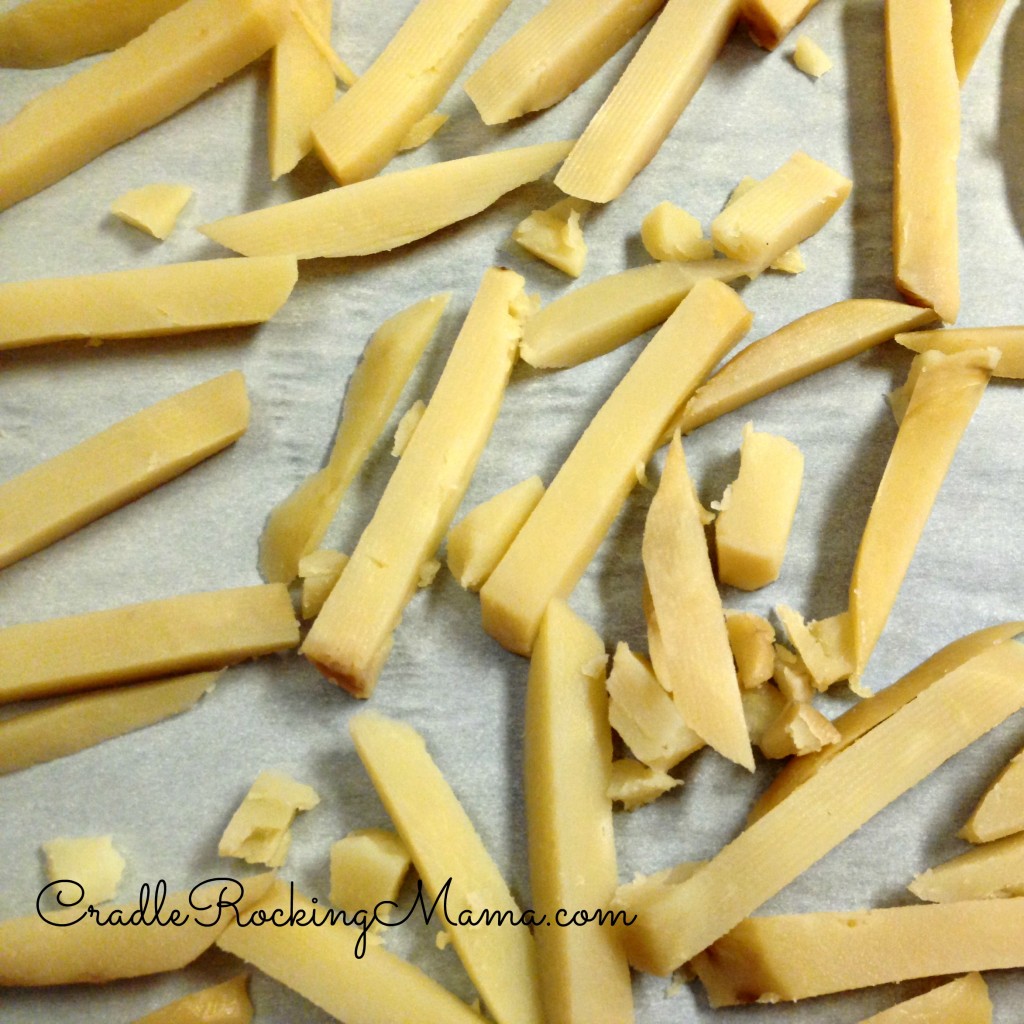
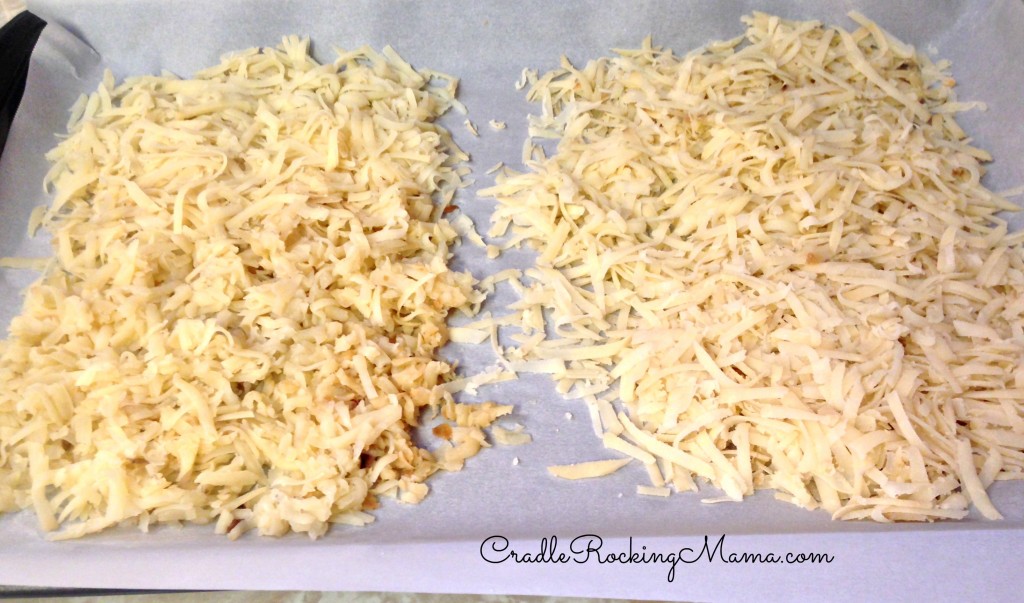
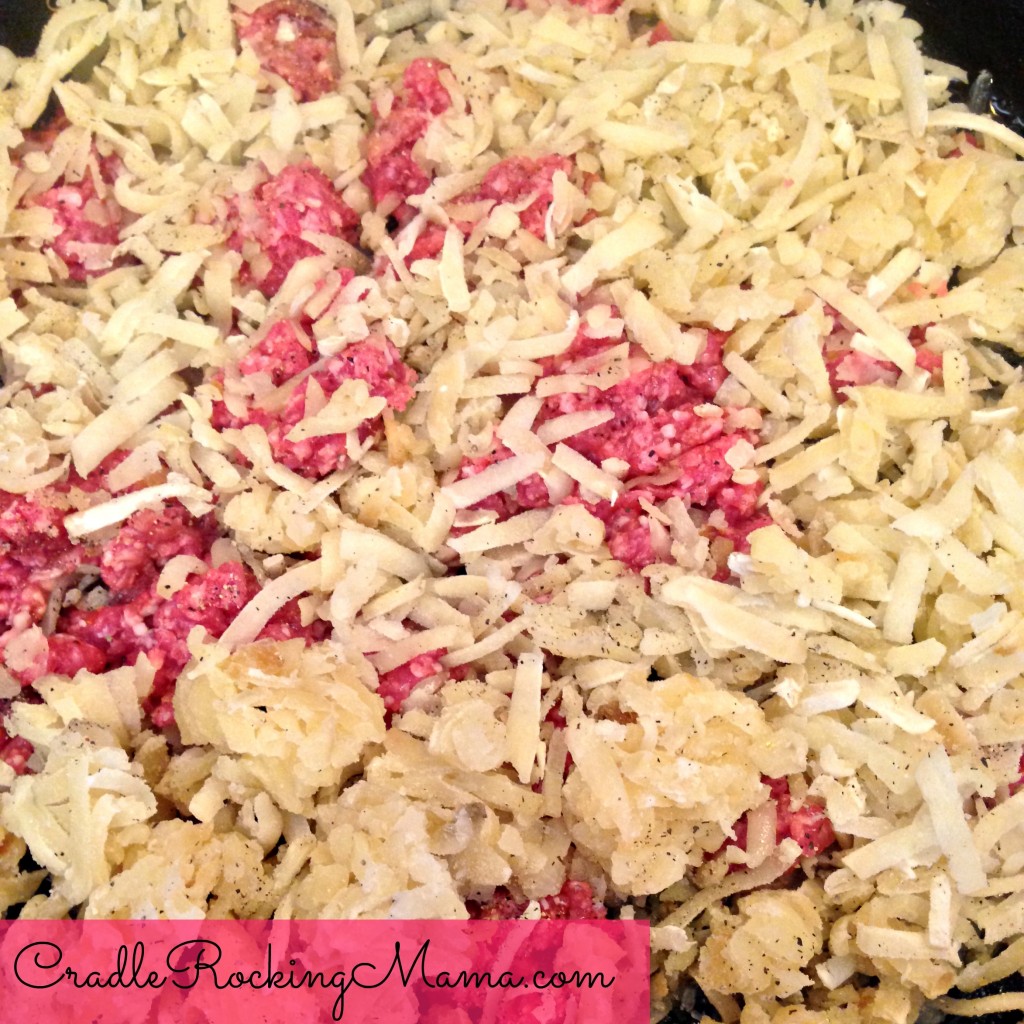
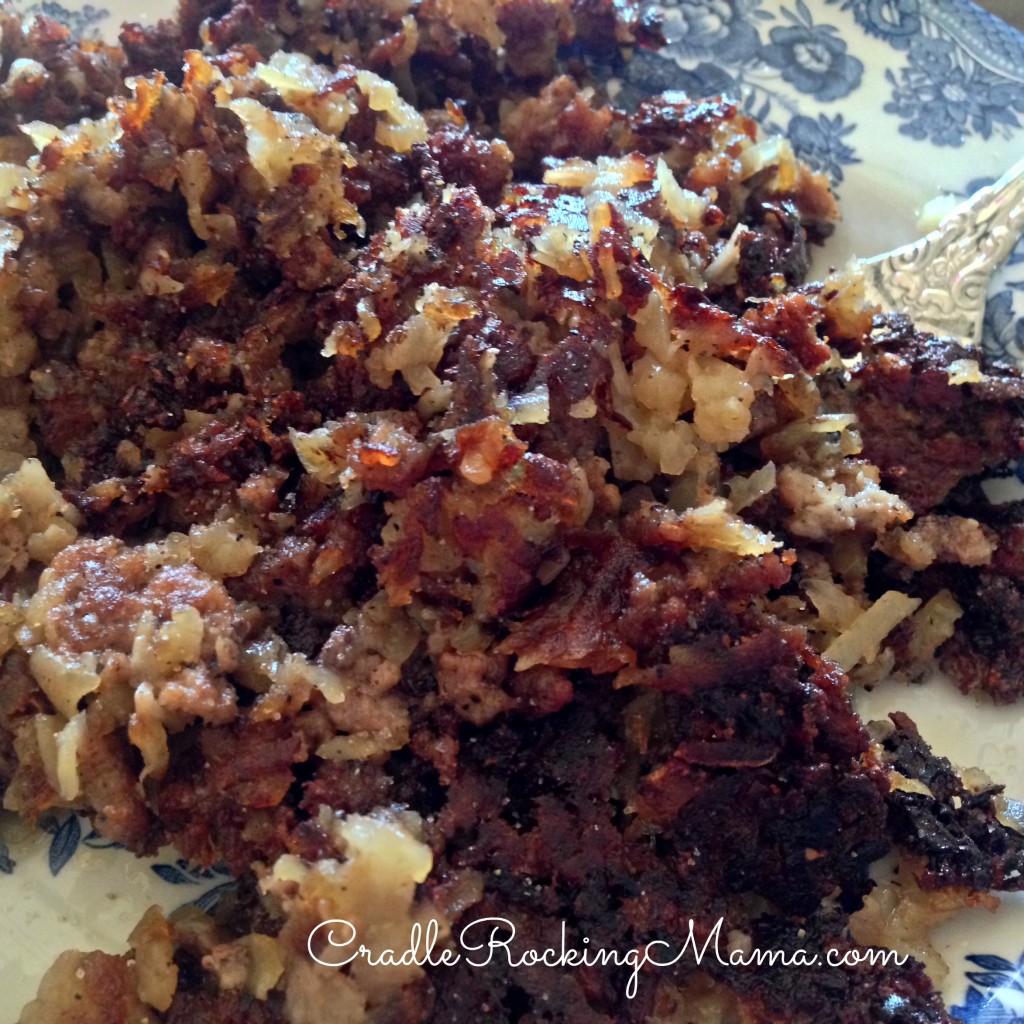
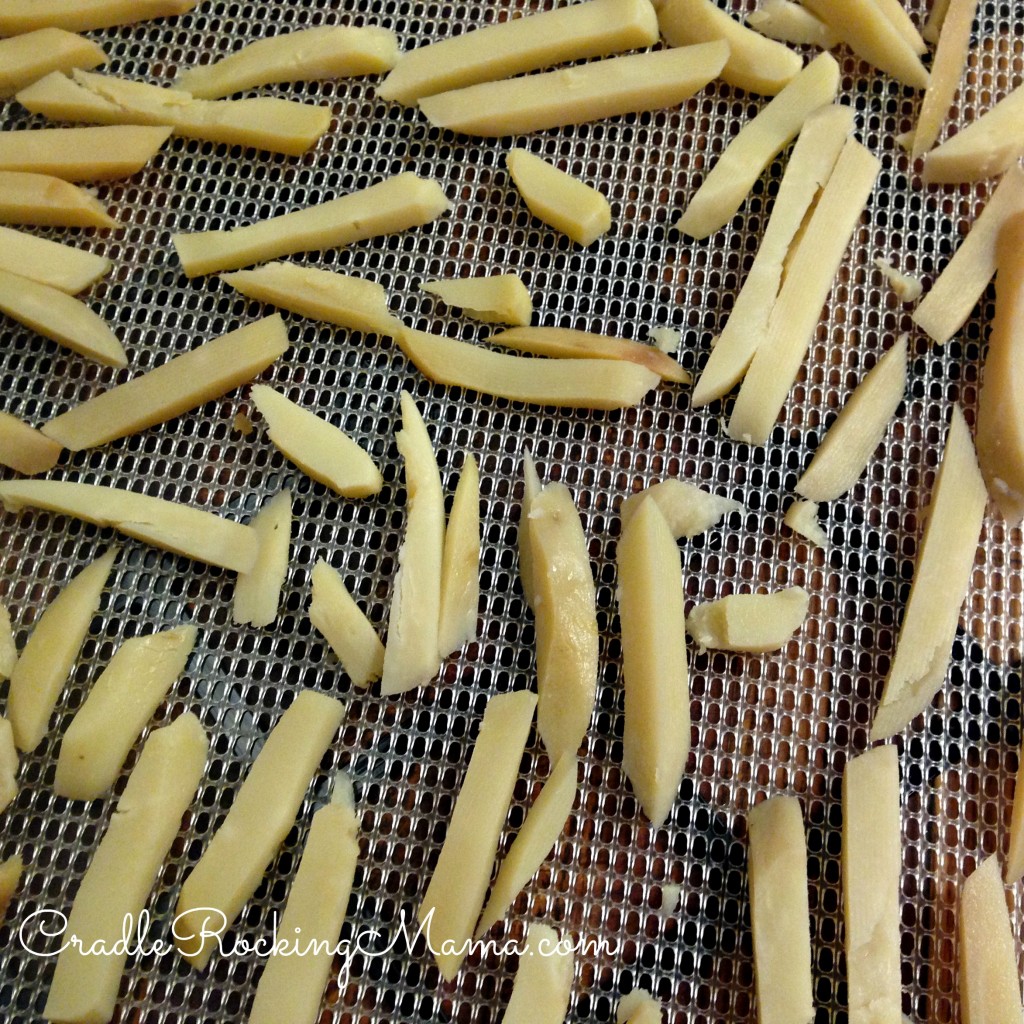

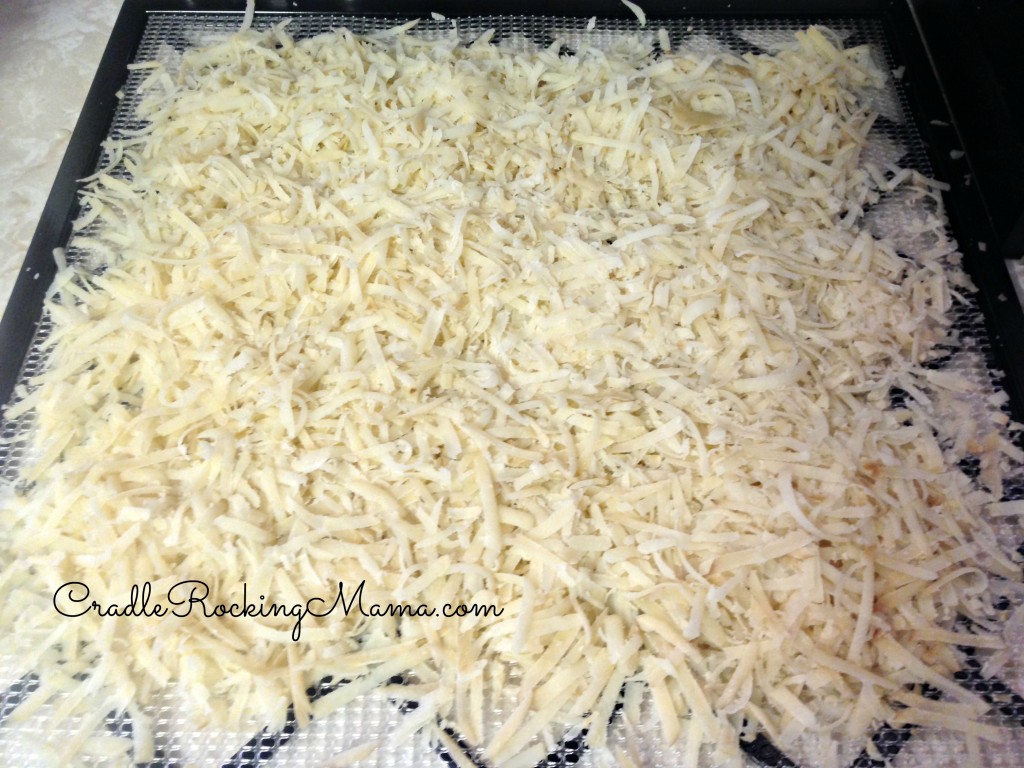
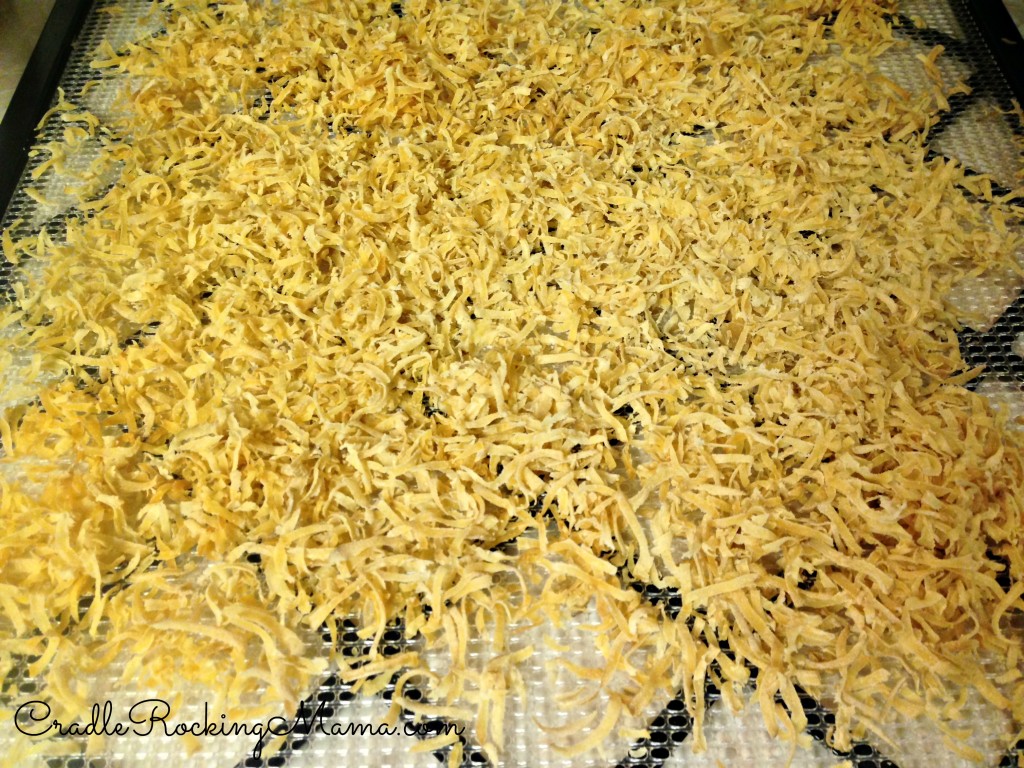





I steam the hash brown shreads till they are half cooked. Put them in the freezer on a pan spread out IMMEDIATELY! The hot spuds freeze fast, less than 20 min, then simply crunch up and put in bags, and put back into the freezer. Fry them as many as I want at a time with a little bacon lard in the pan and season to our liking.
Gotta stop, I’m drooling!
Thanks, Christina! When I steamed my shreds last year it was kind of a pain to do and a big mess to clean up. Do you have any tips to make that easier? That’s why I switched to the baking process. It’s easier to deal with and clean up from.
And yes, that sounds delicious! Anything with bacon grease is good. 😉
I buy a lot of potatoes at auctions I find if you peel them, Blanche them for 5 minutes, let them dry then freeze them they last for a little over a year.I have to frost them and made mashed potatoes potato wedges brands french fries you name it and they were all delicious
Thanks, Marc! Love you, sweetheart! I had no idea you were a potato preserver, too. 🙂
Love the idea of par-baking the potatoes! I par-boiled them last year before slicing them thin and dehydrating to use in scalloped potatoes and gratins, and that was such a time-consuming, messy process. Since I don’t peel mine, I could probably just fill up the rack to par-bake them. Will have to try your French fry trick too – sounds good!
That’s what I love about it – last year I steamed my potatos before dehydrating and it was a mess. This is SO much neater and easier to clean up!
Pingback: How to Preserve Potatos for Long Term Use (Part Two) - Cradle Rocking Mama